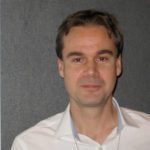Lien vers Pubmed [PMID] – 27628707
Curr. Genet. 2017 Jun;63(3):389-400
Numerous cytogenetic observations have shown that homologous chromosomes (or individual chromosomal loci) can engage in specific pairing interactions in the apparent absence of DNA breakage and recombination, suggesting that canonical recombination-mediated mechanisms may not be the only option for sensing DNA/DNA homology. One proposed mechanism for such recombination-independent homology recognition involves direct contacts between intact double-stranded DNA molecules. The strongest in vivo evidence for the existence of such a mechanism is provided by the phenomena of homology-directed DNA modifications in fungi, known as repeat-induced point mutation (RIP, discovered in Neurospora crassa) and methylation-induced premeiotically (MIP, discovered in Ascobolus immersus). In principle, Neurospora RIP can detect the presence of gene-sized DNA duplications irrespectively of their origin, underlying nucleotide sequence, coding capacity or relative, as well as absolute positions in the genome. Once detected, both sequence copies are altered by numerous cytosine-to-thymine (C-to-T) mutations that extend specifically over the duplicated region. We have recently shown that Neurospora RIP does not require MEI-3, the only RecA/Rad51 protein in this organism, consistent with a recombination-independent mechanism. Using an ultra-sensitive assay for RIP mutation, we have defined additional features of this process. We have shown that RIP can detect short islands of homology of only three base-pairs as long as many such islands are arrayed with a periodicity of 11 or 12 base-pairs along a pair of DNA molecules. While the presence of perfect homology is advantageous, it is not required: chromosomal segments with overall sequence identity of only 35-36 % can still be recognized by RIP. Importantly, in order for this process to work efficiently, participating DNA molecules must be able to co-align along their lengths. Based on these findings, we have proposed a model, in which sequence homology is detected by direct interactions between slightly-extended double-stranded DNAs. As a next step, it will be important to determine if the uncovered principles also apply to other processes that involve recombination-independent interactions between homologous chromosomal loci in vivo as well as to protein-free DNA/DNA interactions that were recently observed under biologically relevant conditions in vitro.

